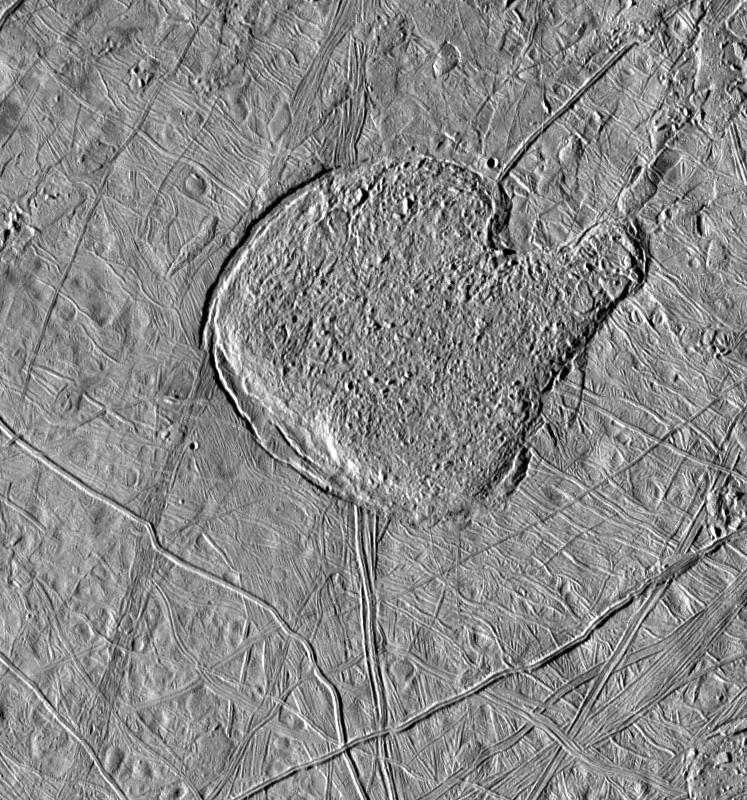All Resources
Mitten Shaped Region of Chaotic Terrain on Europa

This view of Jupiter's icy moon Europa shows a region shaped like a mitten that has a texture similar to the matrix of chaotic terrain, which is seen in medium and high resolution images of numerous locations across Europa's surface. Development of such terrain may be one of the major processes for resurfacing the moon. North is to the top and the sun illuminates the surface from the left. The material in the "catcher's mitt" has the appearance of frozen slush and seems to bulge upward from the adjacent surface, which has been bent downward and cracked, especially along the southwest (lower left) margins. Scientists on the Galileo imaging team are exploring various hypotheses for the formation of such terrain including solid-state convection (vertical movement between areas which differ in density due to heating), upwelling of viscous icy "lava," or liquid water melting through from a subsurface ocean.
The image, centered at 20 degrees north latitude, 80 degrees west longitude covers an area approximately 108 by 112 miles (175 by 180 kilometers). The resolution is 770 feet (235 meters) per picture element. The images were taken on May 31, 1998 Universal Time at a range of 14,000 miles (23,000 kilometers) by the Solid State Imaging (SSI) system on NASA's Galileo spacecraft.


